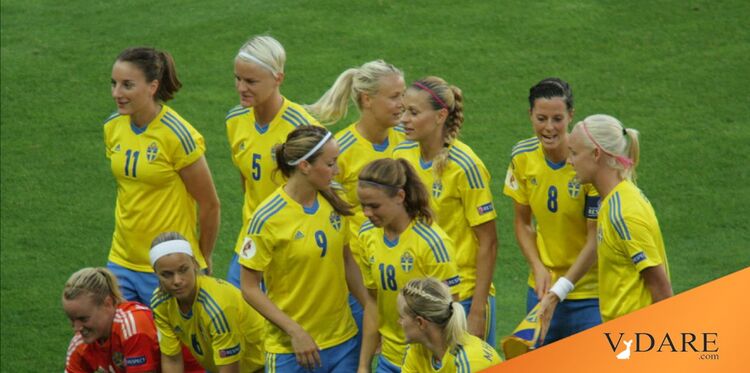
Not Even The Nordics Care Enough About Women’s Sports To Subsidize Them At Title IX Levels
By Steve Sailer
02/24/2023
From The New York Times sports section:
A Common Sight on U.S. Campuses: The Rest of the World’s Female Olympians
A federal law opened doors for millions of American women. It also made the United States an incubator for women’s national teams worldwide.
By Alan Blinder
Feb. 24, 2023, 10:57 a.m. ETBURLINGTON, Vt. — Sini Karjalainen could have played ice hockey closer to home.
She could have stayed in Finland, where she was born. Sweden, with its elite women’s league, was a nearby proving ground. To Karjalainen, though, the most direct route to her goal — a place on Finland’s Olympic roster — ran through the University of Vermont, thousands of miles away.
“It was the easiest,” she said, “the most simple.”
Many of the world’s most athletically gifted women are following similar paths.
In the half-century since Title IX banned discrimination on the basis of sex in nearly every educational setting, millions of American women have embraced vastly expanded opportunities in college sports.
More subtly, though, the law has also made the United States an athletic incubator for women from beyond the nation’s borders. Attracted by the training programs and facilities made possible by Title IX and often constrained by a lack of opportunities at home, thousands of women have competed on American campuses before joining national teams around the world.
At last year’s Winter Olympics in Beijing, where Karjalainen won a bronze medal by playing for Finland, every women’s ice hockey team had skaters with some American college experience.
The story is much the same for summer sports: At the Tokyo Games in 2021, at least 75 countries fielded women who had competed for American colleges. …
As women’s sports expanded in the United States in the decades after Title IX was signed into law in June 1972, college coaches increasingly caught on to what the statute did not say: that the women filling rosters had to be Americans. …
Without American-style college sports programs, with big coaching staffs, glittering facilities and a culture that eased the coexistence of coursework and athletic training, many [Europeans] said they thought it was virtually impossible to balance education with sports, and to be able to earn enough money to make ends meet. …
Even in less prominent sports like women’s ice hockey, there are often platoons of coaches, strength specialists, athletic trainers, nutrition experts and video analysts working in world-class buildings.
“If you compare it to Switzerland, we don’t even have that here — not even the professional hockey teams, the best of the best, have facilities like Ohio State,” said Andrea Braendli, who played for the Buckeyes before she became the starting Swiss goaltender in Beijing.
It’s fascinating that even in highly feminist Northern Europe, few care enough about most women’s sports other than tennis, such as ice hockey, to subsidize them as extravagantly as the American college sports industry is forced to subsidize women’s sports by Title IX.
